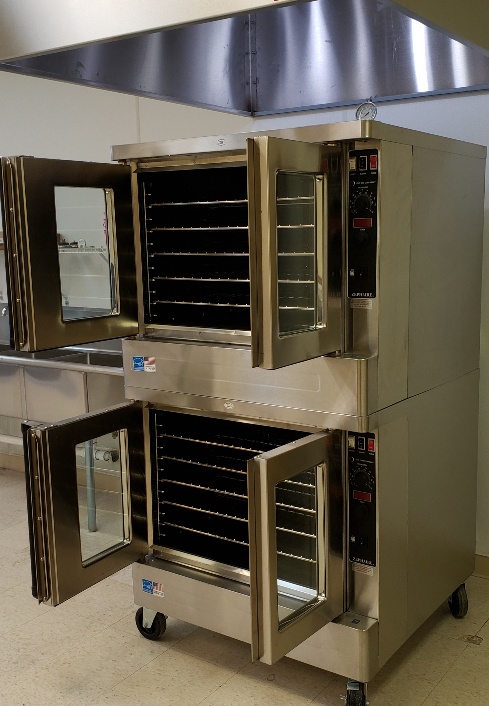Following a gluten free diet is challenging enough, but paying for it can feel like salt on the wound. A 2019 study found that GF products cost 183% more on average. They are often smaller portions and taste/texture can be anywhere from underwhelming to downright gross. So why are gluten free foods so expensive?!? As long time GF consumers, we totally get the frustration with the high cost of gluten free food, but it wasn’t until we opened our bakery that we really understood why that is. Below are some factors affecting cost, as well as some strategies for keeping cost down.
Food Cost
Wheat flour is cheap, easy to grow, and remarkably versatile!
There’s a reason it has become so ubiquitous in food production.
It is very elastic and adaptable to many different applications.
From the tender crumb in a cake to a croissant to bread and pretzels, wheat can do it all.
On the other hand, no one gluten free flour stands on its own.
Most GF flours are a blend of starches, flours and binders, each with different properties.
Many of these ingredients are expensive and/or grown primarily outside of our country.
Here are some that are common in gluten free flours:
rice, tapioca, potato starch, millet, sorghum, almond, coconut, arrowroot, cornstarch, xanthan or guar gum, psyllium
Wheat is a subsidized crop, meaning our government helps regulate the market and pays subsidies to reduce the cost to produce. Many ingredients common in GF flours are expensive to grow and produce. For example, at the time of this writing I could go to Walmart and buy 25 lbs of wheat flour for $9.24, or $0.37/lb. Alternatively, one GF flour blend we purchase costs $3.65/lb, literally 10 times the cost! Another flour blend we use is mixed in house. The individual ingredients average $2.50/lb; however, the labor to mix it brings the cost to the $3.60/lb range.
Why is that? Rice, which is also subsidized, is used in many GF flour blends. However, it is a very hard, dense grain…much more so than wheat. It must be ground super finely (requiring extra time and specialized equipment) to minimize that dry, gritty texture. Other ingredients, like millet, sorghum, and binders such as psyllium (~$9/lb) and xanthan gum (~$19/lb) are expensive and hard to find in bulk.
Labor
Gluten free dough is very different than its wheat-based counterpart.
It is usually quite a bit wetter, less elastic, and sticky.
This means equipment like dough sheeters and extruders do not work well with gluten free dough.
Most of our products are hand rolled or formed. This includes cinnamon rolls, pie crusts, soft pretzels, pizza crust, donuts, graham crackers, cookies, whoopie pies, sandwich bread and hoagie rolls.
In 2023, our labor cost was almost 50% of sales. As we grow and sell more, this will hopefully drop as a percentage.
Equipment
There is a huge secondary market for used commercial restaurant/kitchen/manufacturing equipment, but we cannot take advantage of it. The FDA definition of gluten free is “less than 20 parts per million (ppm) of gluten.” Sensitive individuals can react at levels even lower than that, so the safest option is to buy brand new equipment, since flour can get into all the cracks and crevices of mixers, ovens, etc. and is very difficult to remove. New low-end commercial grade ovens start around $5000 and go up to $50,000 for higher end ones. Mixer costs vary tremendously, but can easily be upwards of $30,000 for large capacity, well-built models.
Smaller market
The GF market is, of course, smaller. In addition, GF products use ingredients like rice and corn that are already drier and tougher by nature, limiting shelf life. This means smaller batches, which are inherently less profitable than large batches. It also means freezing products to extend shelf life, and there is additional cost to storing and transporting frozen goods.
Experimentation/Other costs
One huge area people often don’t consider is the cost of development. Sometimes we nail a new recipe on the first try, and that is so awesome when it happens! But many recipes require multiple test batches before we deem it ready to sell. This applies to grocery stores and manufacturing facilities as well. In addition to requiring a dedicated line, equipment, and specially trained staff, research and development cost is part of pricing.
There are plenty of other costs that increase with gluten free foods, especially in restaurants. For example, training staff, changing food service gloves frequently, certifications, dedicated equipment, etc.
Food Waste
With a smaller market and shorter shelf life comes higher food waste as well. Bakeries have to throw out or heavily discount items that are no longer fresh, increasing the cost to produce.
Ways to Save
So, it’s true, eating gluten free can unfortunately cost more. However, there are ways to minimize the increased costs, and even some advantages to eating gluten free, believe it or not. As a Registered Dietitian Nutritionist (RDN), I have studied the human diet for many years. It is well established that the healthiest diet for most individuals is one high in vegetables, fruits, lean proteins, and whole foods, and low in sugar and highly processed foods. That means all those expensive packaged foods (think anything that can sit on a shelf for months on end), while convenient, are not the best for you anyway.
Eat Naturally Gluten Free Foods
Some cuisines are naturally more gluten free friendly. Many Asian cultures, for example, rely on rice as a staple rather than wheat. Early on in our GF days, we ate a ton of Thai food, which is very gluten free friendly. Vietnamese and Japanese are also fairly easy to get GF.
Maybe you have a favorite food that is naturally GF and you can occasionally splurge on.
It helps to focus on what you can eat rather than what you can’t.
Shop Around/Stock Up
While Whole Foods may have a good selection of healthy foods, they are generally not the most affordable.
Companies like Walmart and Costco usually have a decent selection of gluten free foods.
Regional chains, like Natural Grocers and Sprouts, also often do GF well. Stock up on staples when there is a sale!
Store/Consume GF Foods Optimally
Eat fresh items soon after making, and freeze extras immediately to extend shelf life.
Freezing has minimal impact on taste and texture of many products.
Consider buying a loaf of high quality GF bread and freezing half of it to extend shelf life.
Meal Planning/Cook at Home
Meal planning is an effective strategy for everyone, but can be especially helpful with the gluten free diet.
Cooking at home is not only more affordable but usually safer than eating out.
Of course, in our modern world many people struggle to find the time and energy to cook after a long day of work.
Consider doing meal prep on the weekends and making larger batches of food, eating some fresh and freezing individual portions for later.
Casseroles, crockpot dishes, soups and stews can be inexpensive, easy to prep meals.


